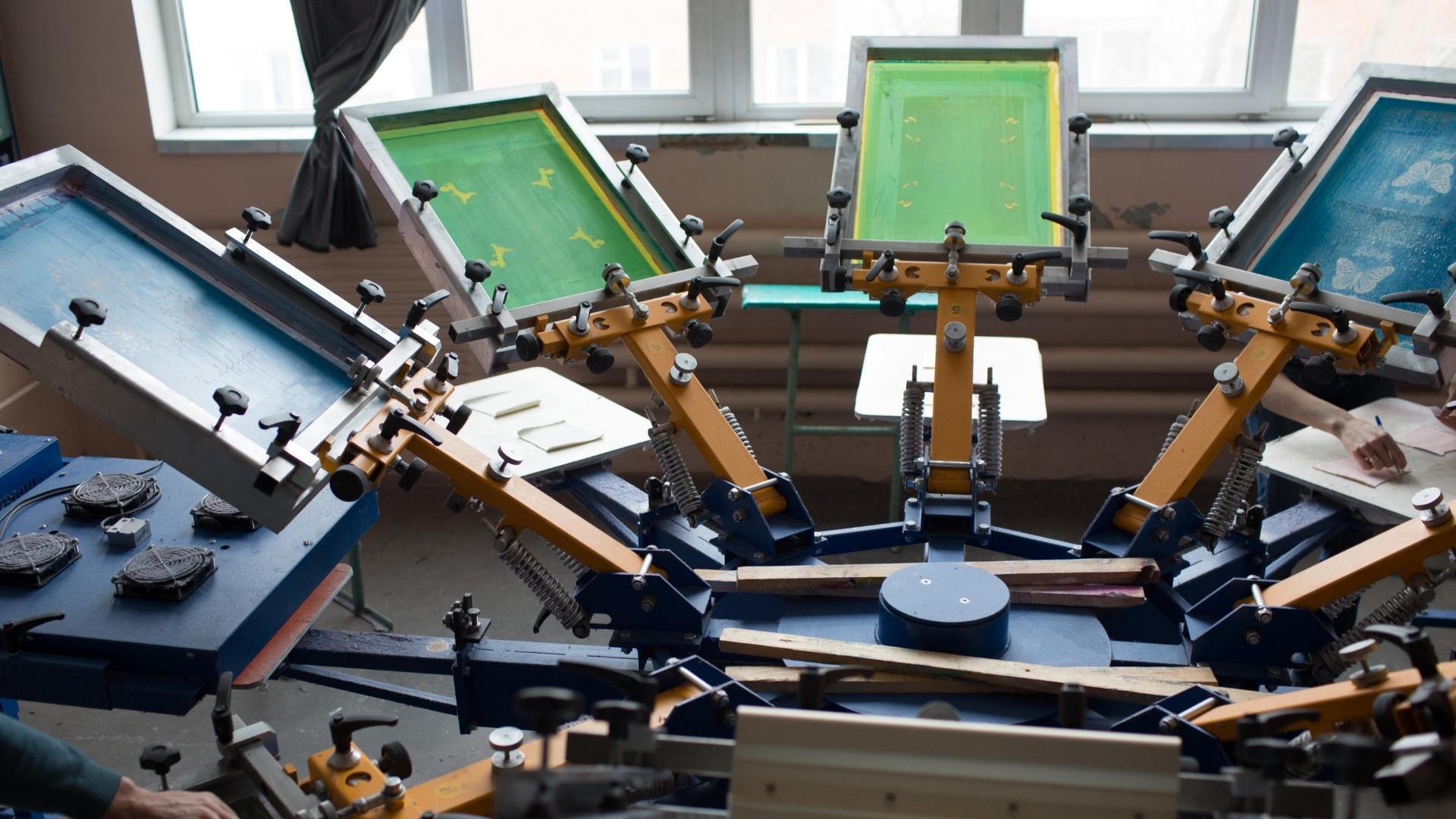The Necessary Overview to Understanding Screen Printing and Its Versatile Uses
Screen printing has a rich background that dates back to ancient times, developing right into an innovative method utilized throughout numerous markets today. This guide explores the intricacies of the screen printing process, outlining its applications in advertising and marketing, home, and style style - 10:9 Design Texas. Comprehending these fundamentals can open innovative capacity for both commercial and imaginative tasks. The complying with areas will certainly disclose essential ideas and methods to boost one's screen printing ventures
The History of Screen Printing
Screen printing has roots that trace back centuries, its development reflects the technological and artistic advancements of various cultures. Originating in ancient China, the method was at first used for embellishing fabrics and later infect Japan, where it ended up being essential to Ukiyo-e woodblock printing. The approach changed to Europe in the 18th century, where it acquired popularity amongst craftsmens and industrial printers. The creation of photo emulsion in the 20th century transformed screen printing, permitting for even more intricate styles and better efficiency. Musicians like Andy Warhol better thrust its appeal, making use of the tool to produce renowned works that blended commercialism and fine art. By the late 20th century, screen printing had developed itself as a versatile technique, used in vogue, advertising and marketing, and great art. Today, it continues to develop, integrating digital innovation and broadening its applications throughout numerous markets.
The Screen Printing Refine Explained
Screen printing changes artistic visions right into tangible designs through a series of accurate actions. An image is created and then moved onto a screen, typically made of great mesh material stretched over a structure. A light-sensitive solution is related to the screen, which is exposed to light, setting in areas not covered by the picture. After washing out the unhardened solution, a stencil is formed.
Next, the screen is positioned over the substrate, whether it be textile, paper, or another product. Ink is then pressed via the open areas of the stencil making use of a squeegee, transferring the layout onto the substrate listed below. This process can be duplicated for numerous colors, requiring separate screens for every shade. The published product is healed making use of warmth to ensure the ink adheres correctly, resulting in a sturdy, vibrant design ready for usage.
Sorts Of Screen Printing Techniques
.png)
In addition, specialty methods, such as discharge screen printing, remove dye from the textile to produce softer prints, while foil screen printing uses metal foil to attain a glossy surface (10:9 Design reviews). Each technique supplies distinctive characteristics, accommodating various imaginative needs and production scales, inevitably increasing the opportunities within the screen printing domain name
Applications of Screen Printing in Various Industries

Additionally, the signs and advertising and marketing sectors use screen printing for producing captivating displays and banners. This technique enables bold colors and elaborate layouts that catch attention. In electronics, screen printing is employed for using conductive inks to motherboard, essential for component connections. The home decoration industry description accepts screen printing to produce distinctive styles on fabrics and wall art. On the whole, screen printing works as an essential device throughout diverse areas, boosting products with individualized and aesthetically appealing graphics.
Tips for Successful Screen Printing Projects
While carrying out a screen printing task, cautious interest to detail can considerably boost the final result. First, choosing top notch products is important; this consists of the screen, inks, and substrates. Making use of proper mesh matters can influence ink deposition and information resolution. Prep work is just as important; comprehensive cleansing of displays and correct direct exposure times ensure crisp prints.
Next, precise enrollment is crucial for multi-color prints. Utilizing positioning tools can assist accomplish precise layering. In addition, screening prints on scrap materials prior to manufacturing helps recognize possible concerns without squandering sources.

Often Asked Inquiries
What Products Are Best for Screen Printing on Textile?
Cotton and polyester blends are perfect for screen printing on textile because of their resilience and ink absorption. Additionally, specialized fabrics like silk or canvas can Home Page generate unique appearances and finishes, boosting the total style high quality.
Just how Do I Tidy and Maintain Screen Printing Tools?
To cleanse and keep screen printing devices, one ought to on a regular basis clean displays with appropriate solvents, examine mops for wear, lube moving components, and store all products in a completely dry, dust-free atmosphere to lengthen their life-span.
What Are the Ecological Impacts of Screen Printing?
Screen printing can have substantial environmental impacts, including chemical waste from solvents and inks, water usage during cleaning procedures, and energy consumption. Lasting methods and environment-friendly materials are important for decreasing these unfavorable results.
Can Screen Printing Be Done in the house Effectively?
Screen printing can be effectively done at home with the ideal materials and techniques. Hobbyists can create high quality prints, though success relies on their ability level, tools, and understanding of the process involved.
What Are the Prices Related To Starting a Display Printing Business?

Beginning find out here a screen printing service entails expenses for equipment, products, and office. Initial costs usually vary from a couple of hundred to several thousand dollars, relying on the range, quality of machinery, and preferred manufacturing capacity.
Screen printing has a rich history that dates back to old times, advancing right into an innovative method utilized across numerous markets today. Another technique, rotating screen printing, utilizes cylindrical displays, assisting in constant printing on textile rolls, therefore enhancing efficiency for massive productions. Additionally, specialty strategies, such as discharge screen printing, remove color from the textile to produce softer prints, while aluminum foil screen printing uses metal foil to attain a glossy surface. In the fashion field, screen printing is commonly used to produce vibrant styles on clothing, enabling brand names to display their one-of-a-kind designs. Cotton and polyester blends are perfect for screen printing on fabric due to their durability and ink absorption.